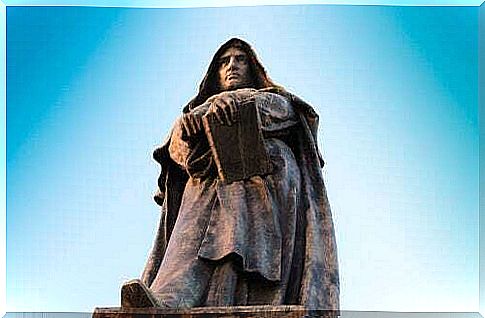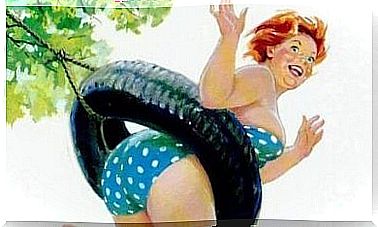Giordano Bruno, Biography Of A Free Thinker

Giordano Bruno is a very interesting historical figure, who over time has become the symbol of free thinkers and the firmness of their beliefs. He lived in an age in which absolute truths and a priori dogmas prevailed, but he distanced himself from them by thinking for himself; finally giving his life to defend his freedom.
Giordano Bruno’s real name was Filippo Bruno. So they baptized him when he was born in the municipality of Nola, in Naples, in 1548. At the age of 14 he took his vows and began studying in an Augustinian monastery. Then, animated by a profound religious fervor, he entered the Dominican Order to become a priest.
Giordano Bruno was a deeply curious and spiritual man. He was eager to learn and seek answers to his questions, by all means. This led him to study the works of Erasmus of Rotterdam, a Dutch thinker condemned by the church. This choice shows us that his desire to know was stronger than the duty imposed by dogmas.
Giordano Bruno, a dissident
After having studied Erasmus of Rotterdam with great interest, Giordano Bruno also immersed himself in the treatises of Aristotle and St. Thomas Aquinas, theorising a mnemonic system which he personally presented to Pope Pius V. He was elected priest in 1576 and then obtained his doctorate in theology.
During his years as a priest, Giordano Bruno was stained with two gestures that provoked the ire of the clergy. He asked that all the figures of the saints be removed from his cell, leaving only the crucifix. On another occasion he told a novice to stop reading a poem dedicated to the Madonna and to concentrate on something else, much more important.
Following these events, heavy accusations were made against him before the Holy Inquisition. This led him to flee Italy when he was 28. He has since become a wanderer, living in styes and wandering aimlessly.
Beyond his religious views, it was his view of the universe that aroused enormous concern and suspicion in churchmen.
A man who supported scientific progress
Giordano Bruno publicly declared that he agreed with Copernicus’ ideas. In his opinion, the Earth was not at the center of the universe. He went even further, claiming that the Sun was just another star and that there were thousands of suns, thousands of worlds, to infinity. He also claimed that other forms of life could exist and that perhaps each had its own God.
Bruno was one of the first to argue that all matter is made up of atoms, which move by impulse. Therefore, that spirit and matter belong to the same reality. According to him, neither the host turned into flesh nor the wine into blood. Therefore the Eucharist is false.
He was not a scientist, but a philosopher and theologian. Despite not having tested them, thanks to his tireless work, numerous scientific ideas at the forefront of the time spread. When his fame grew, after a long journey he finally managed to settle in Paris, and then in England and Germany.

The stake of Giordano Bruno, a historic crime
Bruno tried to join Calvinism and later Lutheranism, but was also expelled from these two religious orders. During his stay in Germany, one day he received an invitation from Giovanni Mocenigo, who wanted to learn from him. Many tried to dissuade him, but he accepted.
When he told him he was leaving, Mocenigo asked him to stay one more day. Giordano Bruno accepted and that same night he was locked up in a basement. The next day the soldiers of the Inquisition came to get him and arrested him. After a summary trial in which Mocenigo himself declared false, Giordano Bruno was sentenced to death.
He spent the next seven years in the prison of the Roman Inquisition, a disgusting place famous for being the scene of torture and obscenities. In 1599 they urged him to withdraw his claims, but he refused. Nine months later they took him to Campo dei Fiori for execution.
On the gallows, they pinned his tongue to prevent him from speaking. Then they showed him a cross and he turned his head in refusal. So it was that finally they burned him alive.









